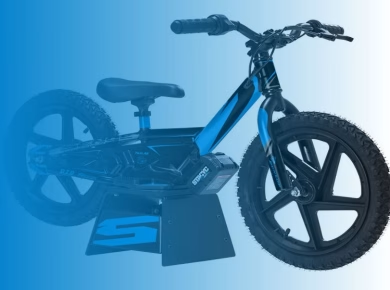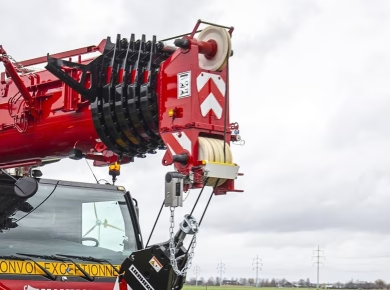All computers will eventually experience slower speeds. Software becomes more complex, and your Computer performance can be affected. It can also impact how your operating system is set up and whether or not you choose to upgrade to Windows 10.
You can upgrade your laptop to speed it up, but there are simpler and more cost-effective ways to improve its performance. Although these minor changes may not speed up your computer performance, they can help you keep your computer functional for many years.
You can also use software to locate and delete old files. These programs can alert you to files or software that could be causing a slow computer. It may be worth uninstalling.
Also Read: How to Choose the Best Laptop for Blogging
How to Increase Computer Performance
There are seven tips in this post on how to increase your computer speed and overall performance.
Check for viruses and spyware.
It is almost impossible not to pick up a virus while surfing the internet. However, the new Windows Defender software makes it easy to identify malware that could be causing serious problems on your computer. It is also simple to install third-party software that can remove any viruses or spyware you have found.
Some applications are more efficient than others, and they can take up more space. This can cause problems with your computer performance and speed. You want software that efficiently removes all malware but doesn’t take up too much space on your computer.
Two types of software can be installed to monitor computer performance. Malware removal programs can fix slow or blatant problems with speed or popups. You should also consider applications that provide ongoing protection and run in the background. However, keep in mind that antivirus programs can take up space, so make sure to select one that does not impact performance.
You can find software that fits your needs and budget by doing some research. You might encounter compatibility issues when downloading free software. Double-check all information before installing to ensure you don’t have any performance issues.
Get rid of unnecessary programs(Uninstall them).
Many applications are preloaded on your computer. While many people may not use them, they can consume system resources. These are usually identified by a popup asking you to update an application you haven’t used before.
- Disable them from your computer to free space
- Click the “Start” button to visit the “All Apps” menu
- This is a list of all the applications that you have installed and those you haven’t
- After you have found the program that you wish to uninstall, click on the icon to open the “Options” menu
You can also right-click Start to visit Programs and features. Windows assistant Cortana is also helpful, as it can search for “Programs”, in its search box. You’ll see a list of the apps that you have used in recent times and which ones take up most of your storage space. You can then review what you have installed and decide which apps can be removed to improve your system’s performance.
Understanding which programs are necessary for your computer operation and which ones can be deleted is important. These applications can slow down your computer because they are often started automatically when your computer boots up.
You can look more closely at the applications you wish to delete within the menus.
Ensure only Important Applications Run at Startup.
You can also choose which apps are running when your computer boots up. Windows 10’s updated Task Manager makes it easier for you to see what is running in the background and which applications you can run on your own.
- To access Task Management, press Ctrl–Shift–Esc
- You will see a box that lists all of the programs you have installed on your computer
- This also provides a detailed report on how much RAM each program uses to start your computer
- To adjust, right-click the application that you wish to modify to stop it from running until it is commanded
If you notice that a program that is affecting your computer performance is not running, you can change its settings. You can restart your computer to verify that certain programs are not running.
Consider Using SSD for Startup
A startup solid-state drive (SSD) can help you get better performance by reducing the load on your processor when the computer starts up. A startup drive is a great option if you use multiple applications or photo and video editing software.
SSDs are most often installed on desktop computers. However, they can also be used on certain laptop models. An external drive can be purchased to connect to your computer with a USB 3.0 port. This external drive can give you extra motivation to start tasks or boost apps that require more temporary memory.
Many SSD options are available that will work for you, depending on your needs. Online storage review sites can be a great resource of information when choosing the right SSD for your computer. You also need to make sure that it is compatible with your operating system.
Check your web browser.
Small adjustments can often make all the difference in how fast your computer runs. Simple adjustments such as changing the browser can make a big difference in how fast web pages, videos, and images load. You might consider switching to another browser if you notice a slow loading speed.
Your browser type isn’t the only thing that could slow down your computer while you surf the internet. You should check your settings to see if you have a full cache and make sure it has been empty for a while.
When you visit different websites, your cache contains what you have already saved. Many websites use cookies to track your browsing habits. When you visit a site, ads you click on may also leave a cookie. These files are stored in a cache and can cause your computer to slow down if you spend too much time online.
It’s easy to fix. You can do this with the most popular web browsers.
Be aware that cookies can include the autofill function within your search bar.
Perform disk defragmentation and Clean up.
It is common practice to leave files and programs on the hard drive of a computer that hasn’t been used for a long time or is no longer relevant. Disk Cleanup can help you find and delete files and applications from your computer to free up space on your hard drive for the programs you use.
How to Perform Disk Cleanup and Increase Your Computer Performance;
- Click the Start button or Cortana Search Box to be directed to the program
- A quick scan of your computer will reveal any temporary files, web pages, or installer programs that you don’t need.
- It will then delete them all and free up space.
Disk Cleanup’s efficiency depends on the RAM on your computer. This can cause your computer to work slower than usual. It may be worth installing more RAM on your computer.
Schedule disk defragmentation at least once a month to keep track of your hard-drive space. Windows comes with an Optimize Drives feature that you can access via the Start button and your Cortana search field. You can also use third-party software to clean out files you no longer need.
Increase the RAM on your computer
Windows 10’s memory usage is lower than in previous versions. However, increasing RAM has been a proven way to increase performance for years.
You’ll have to accept what was in the box if you have a convertible laptop or detachable laptop. It is possible to add RAM on some gaming PCs and business laptops, but this can be difficult.
It is much simpler to add RAM to desktop computers. Also, it is much more affordable. A basic understanding of the interior of a desktop tower will allow you to install more RAM in less than an hour.
You can take your computer to a professional shop to have additional RAM installed. You can also get help from someone experienced in this field if you are worried about compromising your computer or making mistakes.
Final Words on How to Increase Computer Performance
If your computer is having problems loading certain applications or has slow performance, it may be time to make some small adjustments.
Double-check your computer to ensure there are no malware, spyware, or viruses causing slow speeds or lags. You can then look into other possible causes of problems to speed up, maintain, or check your computer performance for a better user experience.
Read Next:
- How to Buy Laptops: 5 Things to Consider
- Tips for Choosing the Best Gaming Laptops
- 8 Best Gaming Laptops In the Market for PC Gaming






